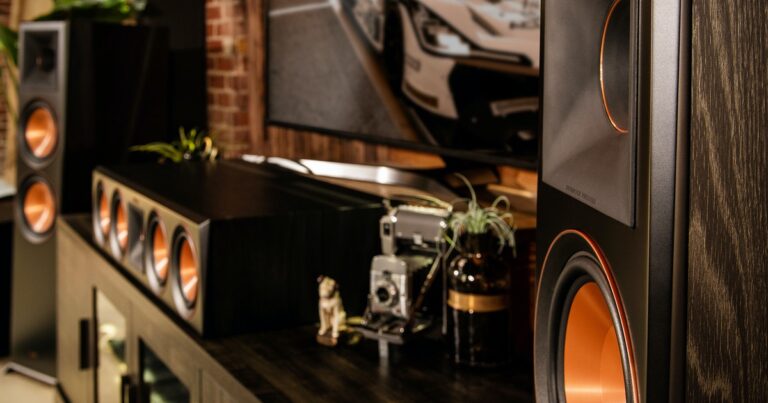
Tired of raucous crowds at cinemas? Want to add another dimension of sound to your favorite Netflix shows? The best solution would be to pack your den full of speakers so you’d never have to leave the couch again. But before shelling out good money, you need to understand the basics of how surround sound works.
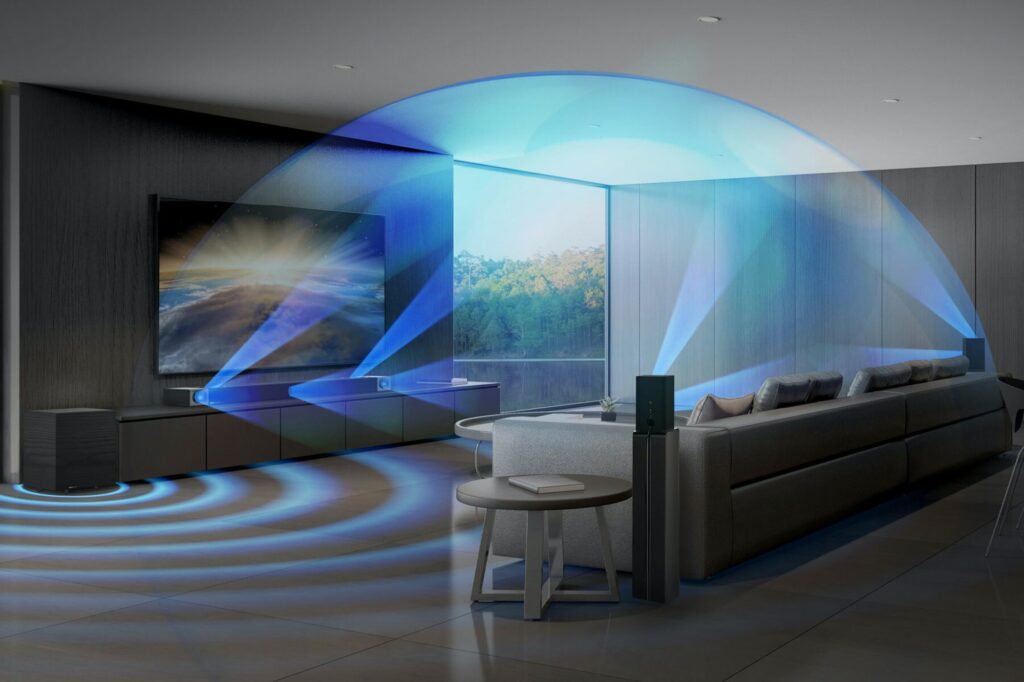
What is Surround Sound Audio?
Surround sound is exactly what it sounds like: It’s a category of products and technologies designed to immerse you in audio from all sides, all angles, and increasingly, from all heights too. It has been a part of the film industry for many years, but the emergence of affordable digital technology has now pushed it into the domestic mainstream.
A surround sound system includes a set of speakers—usually five, including the center speaker—and a subwoofer for powerful bass. This is where the term “5.1” comes from: five speakers and a subwoofer.
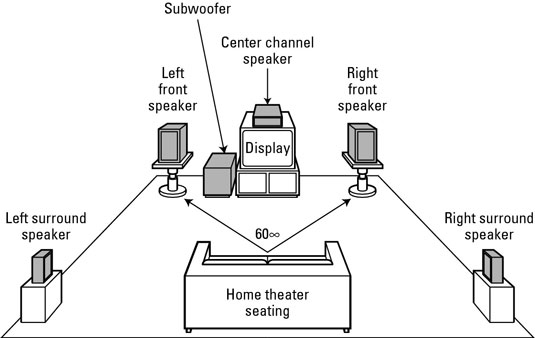
But besides 5.1, there are also many other types of speaker configurations, such as 7.1, 7.1.2, 9.1, and more. Next, we are going to take a look at these numbers and see what they mean.
Understanding Home Theater Channels: X.Y.Z
You’ve probably seen the shorthand x.y.z lots of times before. Today, we demystify them.
This format can be used to describe the number and type of channels in any sound system, from a simple soundbar to an advanced A/V receiver to a professional movie theater surround sound system.
The first number defines the number of main speakers in the setup. When it comes to the main speakers, we are referring to the front left, front right, center, and various surround speakers.
The second number represents a subwoofer, or other device that handles low frequency audio. It’s kept separate because subwoofers are a different piece of kit to a normal speaker, and so they’re represented after the main number.
Realistically, your speaker system could be .1 or .2, which just represents how many subwoofers you’ve got. Most (essentially all) surround sound systems will require a subwoofer of some kind in order to produce the deep bass that makes the biggest difference over normal TV speakers.
Finally, the third and last number indicates the number of overhead channels or speakers. If a system does not have any dedicated height channels, then the last digit is left off.
For example, 7.1.2 means that this speaker system has 7 main speakers, 1 subwoofer and 2 upward-firing speakers.
Although you can basically have as many channels (speakers) as you want, the most common configurations are:
- 2.0. This is your normal stereo audio, and features a left and a right speaker. All music is recorded in stereo, and normal video media playback is in stereo.
- 5.1. This is the most standard format for surround sound, and will be the easiest if you’re new to the game. It has the normal left and right speakers, a center channel, and 2 surround speakers that’ll usually go behind your seating area.
- 6.1. This has everything 5.1 surround sound has, but includes an extra back surround channel that goes behind your seating area for more immersive sound.
- 7.1. These speaker systems have built-in systems that essentially split signals for a single back channel (in a 6.1 system) into 2 audio channels, thereby giving you an even greater level of immersion.
- 8.1 or more. Once you get above 7.1 channels you’re into pretty specialist territory, and it’s likely you’ll be building this system yourself. The more speakers you add, the more immersive your viewing experience will be.
Can a Soundbar Do That?

You’d be surprised. When the first soundbars came out, they were bulky looking and not too impressive. But since then, the category has come a long way.
Today’s soundbars create a three dimensional sound effect by angling the drivers in specific directions to “bounce” the sound waves off of the walls of the room and back towards the listener from different directions.
And if you’re willing to go a bit higher in price, many performance soundbars support the more immersive Dolby Atmos and DTS:X surround sound formats, which add overhead and height effects and allow them to approach the enveloping, dynamic sound of an AV-receiver-based surround-sound system.
Plus, most soundbars would look amazing mounted beneath your TV. They take up very little space and are extremely easy to set up.
Ready for cinematic sound at home? Check out the latest Philips AirPlay 2 soundbars that are now up for grabs!
The 2.1 channel entry-level model offers up to 240W of maximum output power, while the upgraded 3.1.2 model more than doubles that at 600W. Both units feature Dolby Atmos and support for AirPlay 2 and Play-Fi, paving the way for quickly adding more Play-Fi compatible speakers to create a multi-room audio system without wires, cables or dongles.
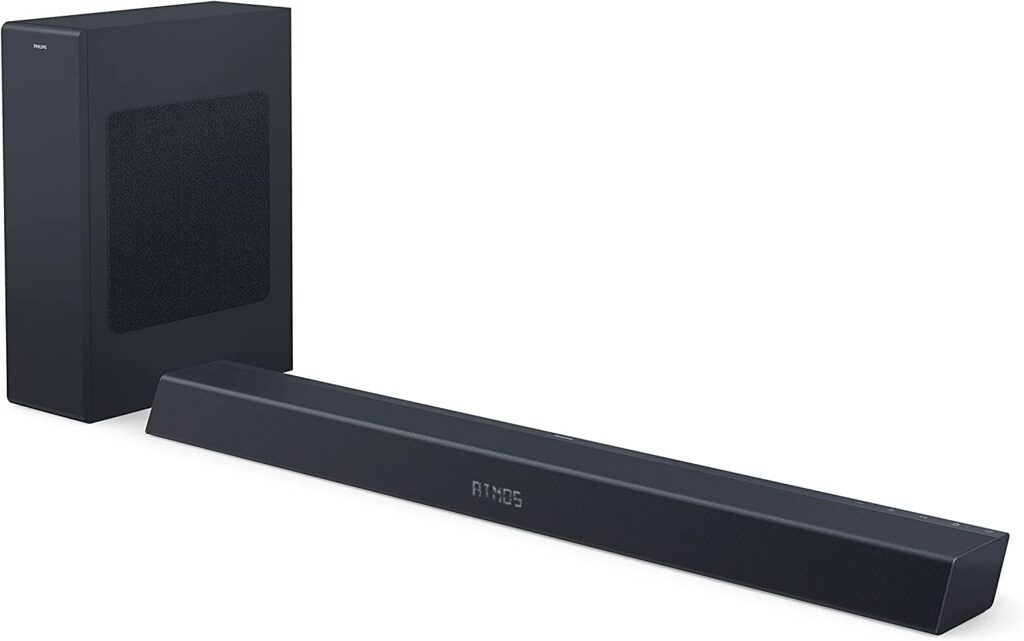
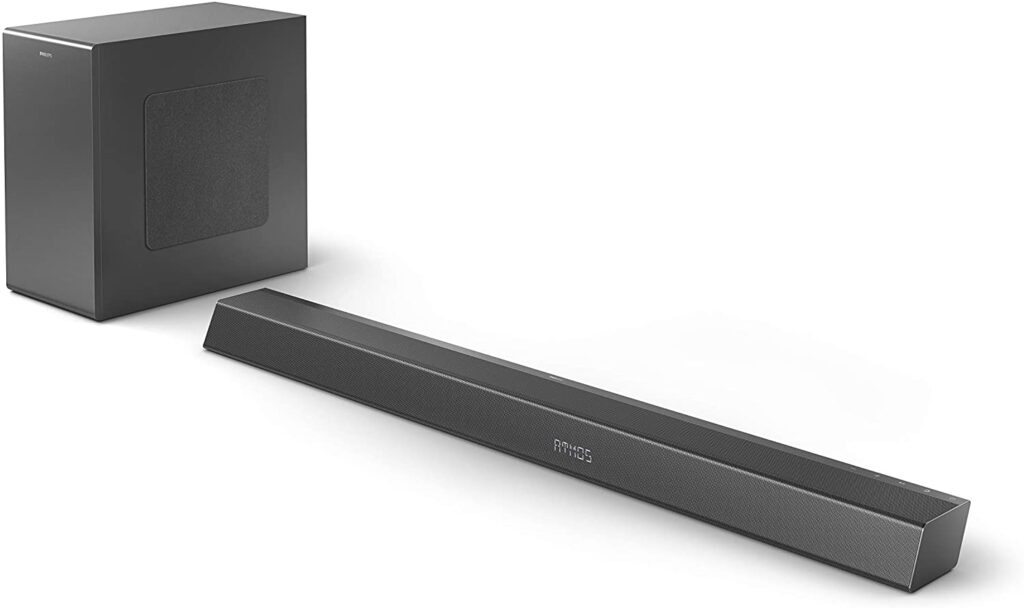
Dual HDMI inputs could help buyers spend less time behind the television when connecting game consoles, streaming media players, and the list goes on.
In addition, clean and modern designs will arguably make each of these soundbars a solid pick for anyone trying to avoid a cluttered setup.
Pricing starts at $399.99 for the 2.1-channel model, while the upgraded 3.1.2-channel unit ratchets things up to $599.99.
Check out the video below to learn more!